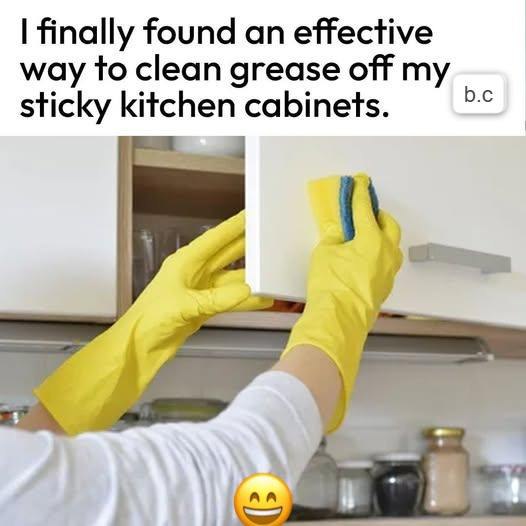Introduction: Kitchen cabinets are often the unsung heroes of the kitchen, storing everything from cookware to food items. However, over time, they can accumulate sticky grease and grime, particularly from cooking activities like frying, sautéing, and baking. Grease splatters and spills are inevitable in a bustling kitchen, but the good news is that with a little elbow grease and the right cleaning technique, you can restore your cabinets to their original shine. This article provides a step-by-step guide on how to remove sticky grease from your kitchen cabinets using simple, non-toxic ingredients.
Ingredients:
White vinegar
Baking soda
Dish soap (preferably a grease-fighting variety)
Warm water
Microfiber cloths
A soft sponge
A toothbrush (optional, for intricate areas)
Olive oil or mineral oil (for polishing afterward)
Lemon juice (optional, for added freshness)
Directions:
Preparation: Begin by removing all items from the cabinets, including any dishes, cups, or utensils. This will give you clear access to all surfaces and prevent items from getting in the way during cleaning.
Initial Wipe-Down: Dampen a microfiber cloth with warm water and gently wipe down the surfaces of the cabinets to remove any loose dust or dirt. This prepares the surface for a more thorough cleaning.
Create a Cleaning Solution: In a small bowl, mix 1/4 cup of dish soap with 1/2 cup of white vinegar and warm water (around 2 cups). Stir the mixture until it becomes slightly bubbly.
Apply the Solution: Dip a sponge or cloth into the solution and gently scrub the greasy areas on the cabinets. For stubborn grease, you may want to use a bit more pressure. Be sure to focus on areas with visible grease marks, such as around handles or along the edges.
Tackle Tough Spots with Baking Soda Paste: For especially stubborn spots, create a paste by mixing 2 tablespoons of baking soda with water. Apply this paste directly to the greasy spots and let it sit for 5–10 minutes. Use a sponge or toothbrush to gently scrub the area, ensuring you don’t damage the wood or finish.
Rinse and Dry: Once you’ve scrubbed away the grease, dampen a clean cloth with water and wipe down the cabinets to remove any remaining cleaning solution or residue. Dry the surfaces thoroughly with a dry cloth to prevent water damage.
Polish: After the grease has been removed, you can apply a small amount of olive oil or mineral oil to a cloth and gently rub it into the wood to restore shine and create a protective layer.
Serving and Storage Tips:
For regular maintenance, wipe down your kitchen cabinets weekly with a damp microfiber cloth to prevent grease buildup.
Avoid using harsh chemical cleaners, as they can damage the finish or surface of your cabinets.
Store any leftover cleaning solutions in an airtight container and keep it in a cool, dry place for future use.
For Wooden Cabinets: If your cabinets are made of wood, make sure to test any cleaning solution in an inconspicuous area first. Some wood finishes can be sensitive to vinegar or citrus-based cleaners.
Citrus Twist: For a fresh, clean scent, add a few drops of lemon juice to your cleaning solution. The acidity helps cut through grease while leaving a pleasant fragrance.
continued on next page
